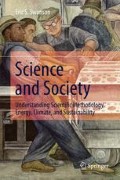Abstract
The previous chapter was fairly theoretical – it’s time to get our hands dirty and think about doing science. In practice, this means doing experiments; either to explore new phenomena, or more often, to decide something. We define:
An experiment is a controlled, reproducible examination of nature intended to arbitrate between competing hypotheses.
“It is alleged to be found true by proof, that by the taking of Tobacco, divers[e] and very many do find themselves cured of divers[e] diseases; as on the other part, no man ever received harm thereby. In this argument there is first a great mistaking, and next a monstrous absurdity:...when a sick man has his disease at the height, he hath at that instant taken Tobacco, and afterward his disease taking the natural course of declining and consequently the patient of recovering his health, O then the Tobacco forsooth, was the worker of that miracle.”
— King James I, A Counterblaste to Tobacco.
Access this chapter
Tax calculation will be finalised at checkout
Purchases are for personal use only
Notes
- 1.
Empiricism is the idea that all knowledge is derived from the senses.
- 2.
A corpuscle is a particle, so this refers to the idea that matter is made of atoms.
- 3.
A carcinogen is something that causes cancer.
- 4.
Epidemiology is the study of causes and effects of disease and other factors that impact health.
- 5.
Many other types of studies exist, including cross-sectional (a survey), screening, and diagnostic.
- 6.
The formula for the normal distribution is \(N(x) =\exp [-(x-\mu )^{2}/(2\sigma ^{2})]/(\sigma \sqrt{2\pi })\).
- 7.
The entry “accept null hypothesis” should more properly be called “fail to reject the null hypothesis”. We stick with the first because it is less wordy.
- 8.
As of the 113th Congress there are 79 women out of 435 representatives.
- 9.
There is a way to calculate (b) called Bayes’ Theorem.
- 10.
Source: M.J. Schervish, P Values: What They Are and What They Are Not, The American Statistician 50, 203–206 (1996).
- 11.
This result actually applies for the exact means and standard deviations. We will use it with the measured means and standard deviations, which are the best approximations we have to the (unknown) actual values.
- 12.
PLoS Medicine, 2, e124 (2005).
- 13.
This topic will be revisited in Chap. 5
Author information
Authors and Affiliations
Rights and permissions
Copyright information
© 2016 Springer International Publishing Switzerland
About this chapter
Cite this chapter
Swanson, E.S. (2016). Doing Science. In: Science and Society. Springer, Cham. https://doi.org/10.1007/978-3-319-21987-5_2
Download citation
DOI: https://doi.org/10.1007/978-3-319-21987-5_2
Publisher Name: Springer, Cham
Print ISBN: 978-3-319-21986-8
Online ISBN: 978-3-319-21987-5
eBook Packages: Social SciencesSocial Sciences (R0)

